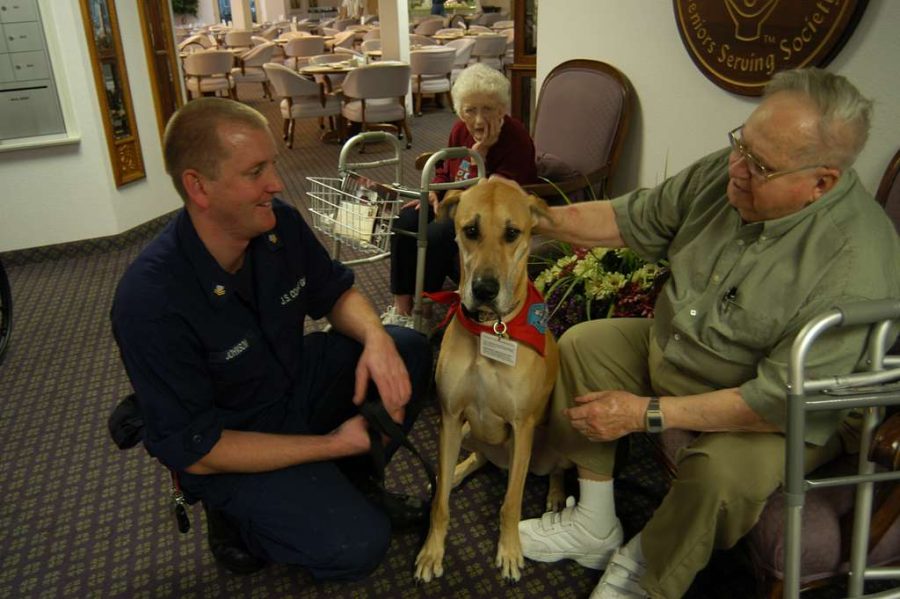Therapy Animals
January 24, 2022
Therapy animals are pets that possess the necessary skills and temperament to provide therapy under the supervision of a healthcare or human service professional. Therapy animals are trained to offer comfort and relaxation to people in stressful environments. You will most commonly see these animals in hospitals, nursing homes, schools, and disaster areas.
Surprisingly, a therapy animal is not the same as an emotional support animal. A prescription letter is required for emotional support animals to be able to travel or live in free pet housing. Therapy animals do not require such prescription letters. Moreover, therapy animals are not the same as service dogs. Service dogs have special access rights to certain facilities and amenities, while therapy animals do not.
Therapy animals can be classified as one of three types: animal-assisted therapy animals, facility therapy animals, and therapeutic visitation animals.
Animal-assisted therapy is when specially trained animals assist physical and occupational therapists with their patients. These pets can improve limb mobility and motor skills in patients as the patients stroke their fur. Animal-assisted therapy also helps patients relearn basic pet care skills so they can care for their own pets when they get better and return home.
The second type is facility therapy, in which these therapy pets reside at the care center and are specifically trained to help patients with Alzheimer’s disease or other mental illnesses. These animals help keep these patients safe while engaging and monitoring them.
The most common type of therapy animal is the therapeutic visitation animal. These are animals that travel to various places such as healthcare facilities. Therapeutic visitation animals are when the owners take their personal pets to visit them in a healthcare facility, which can motivate the owners to recover so that they can return home to their pet.
There are a handful of animals that can be classified as therapy animals, and they can range from a dog to a horse!
When the phrase “therapy animal” is brought up in a conversation, it is most likely that one would picture a dog first. Well, that line of thinking makes sense since dogs are the most common therapy animals. Dogs make ideal therapy animals because they can easily pick up on basic obedience commands and are known for being classic human companions. Dogs come in all shapes and sizes and are quality furry friends to anybody no matter their size. You will most likely come across a therapy dog in hospitals, nursing homes, schools, or detention centers.
Similar to dogs, cats can become therapy animals as well. Cats fit right into indoor facilities such as hospitals or nursing homes and can aid people who miss their own pets. Therapy cats learn to walk on a leash and have very calm demeanors. Some people do have an innate fear of dogs, so a therapy cat is a great option!
Although they are a more shocking type of therapy animal, horses do make wonderful therapy animals. Of course, horses do not go around schools or hospitals to comfort people, but you will see equine-assisted therapy techniques that involve therapy horses. Therapy horses are most notably known for aiding in mental health and being a part of equine-facilitated psychotherapy conducted by addiction treatment centers, veterans groups, and other mental wellness facilities.
Now, you may be wondering how to get a therapy dog of your own. Well, therapy dogs are not actually registered by official organizations that deal with emotional support. Rather, there are volunteer organizations that could provide information for potential therapy dog owners! One organization, called Therapy Dog International, offers opportunities for volunteer dog handlers at establishments such as nursing homes. The American Kennel Club is another organization known for setting up programs across the U.S. with the purpose of finding volunteer programs.
On Dec. 9, the Arcadia Public Library hosted a De-Stress Fest in which the individuals could be comforted by therapy dogs. It was located at the Cay Mortenson Auditorium, and lasted from 3:30 to 5:30 p.m. These therapy dogs were most likely an especially big help for the high schoolers in the midst of finals season!
Even students at Arcadia High School have expressed their interest in therapy animals.
Junior Sahanna Rajinkanthan stated, “I would be interested in getting a therapy animal since school can be stressful and can take a toll on my mental health. It would be nice to have a pet to support me when I got home.”
Junior Ian Qi said, “While we get overwhelmed by the systematic pressure from school, we need a pure, innocent life form to awaken our natural side, and therapy animals are perfect to distract us from worldly affairs. ”
If you feel stressed out or need a companion, try reaching out to volunteer organizations for information on therapy animals!
Photo Courtesy of PICRYL

